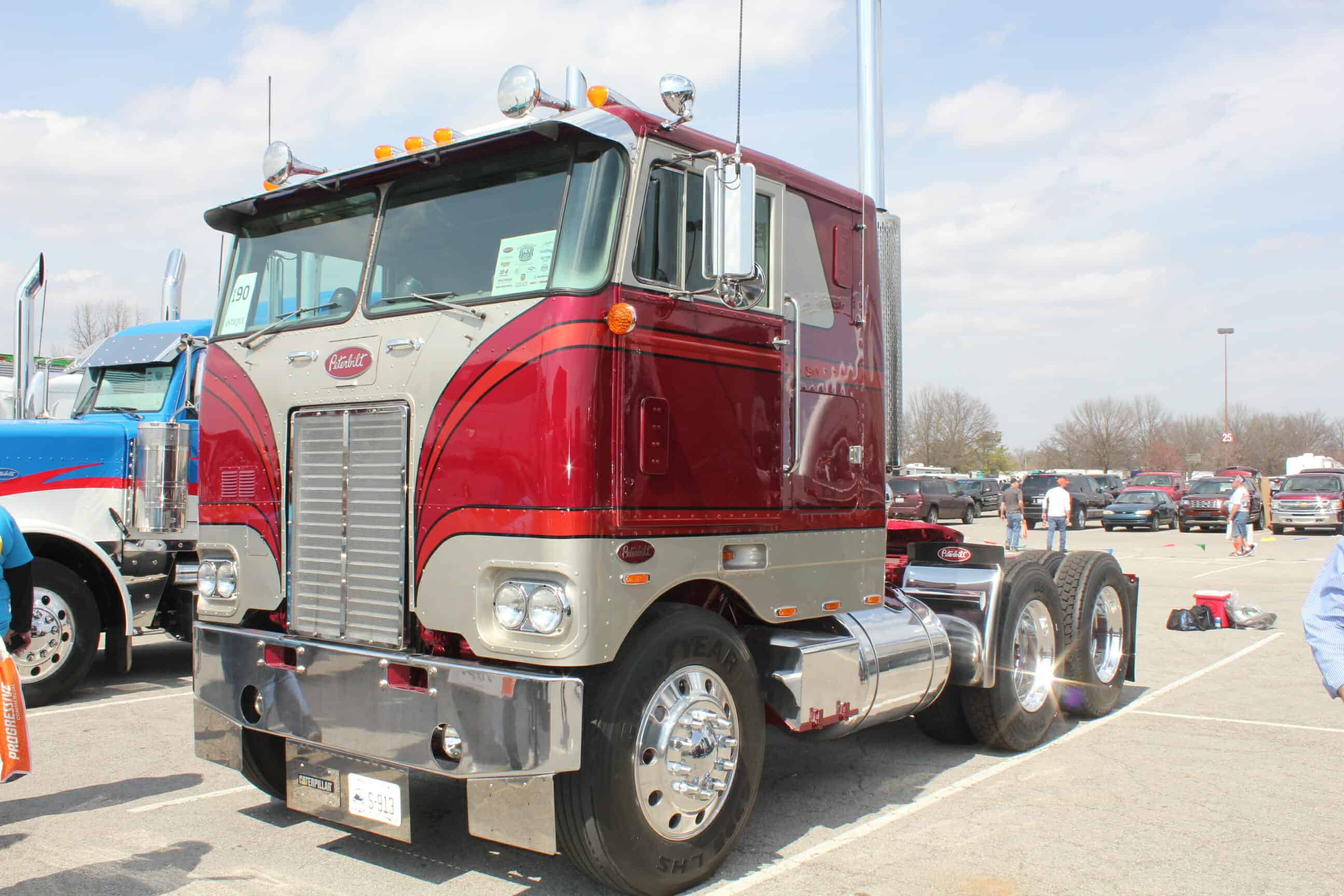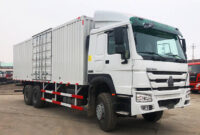Cabover Sleeper Trucks For Sale: A Comprehensive Buyer’s Guide pickup.truckstrend.com
Introduction: The Enduring Appeal of the Cabover Sleeper
In the vast landscape of commercial trucking, few vehicles evoke as much nostalgia and practical admiration as the cabover sleeper truck. Defined by their distinctive design where the driver’s cab sits directly above the engine, rather than behind it, these trucks offer a unique blend of maneuverability, visibility, and often, a shorter overall length. While their prominence in North American long-haul operations has waned since the early 2000s in favor of conventional trucks, the market for used cabover sleepers remains vibrant, driven by their specific advantages in certain applications, their iconic status, and their robust, often overbuilt, construction.
Cabover Sleeper Trucks For Sale: A Comprehensive Buyer’s Guide
For owner-operators, small fleets, or even enthusiasts looking for a practical and distinctive workhorse, understanding the nuances of "Cabover Sleeper Trucks For Sale" is crucial. This comprehensive guide will delve into why these trucks might be the right choice for you, what to look for when buying, where to find them, and how to navigate the purchasing process, ensuring you make an informed decision on your next trucking investment.
Why Choose a Cabover Sleeper? The Unique Advantages
Despite their reduced production, cabover sleeper trucks continue to be sought after for several compelling reasons:
- Superior Maneuverability: This is perhaps their most significant advantage. With the front wheels positioned directly beneath the driver, cabovers offer a tighter turning radius than conventional trucks. This makes them ideal for navigating congested city streets, tight loading docks, crowded truck stops, and challenging construction sites where space is at a premium.
- Enhanced Visibility: The elevated seating position and the absence of a long hood in front provide unparalleled forward and downward visibility. Drivers can see objects closer to the front of the truck, improving safety and precision in tight quarters.
- Shorter Overall Length (OAL): In many configurations, cabovers allow for a shorter overall vehicle length while accommodating standard trailer sizes. This can be advantageous in regions with strict length regulations or for operations requiring maximum payload within specific dimensional constraints.
- Lighter Tare Weight (Potentially): Some cabover designs, particularly older models, can offer a lighter tare (empty) weight compared to similarly equipped conventionals. This translates to a higher potential payload, directly impacting profitability for weight-sensitive cargo.
- Ease of Engine Access: The tilting cab design provides excellent, unhindered access to the engine and transmission for maintenance and repairs, potentially reducing service times and costs.
- Nostalgia and Iconic Status: For many, cabovers represent a golden era of trucking. Owning one is not just a practical decision but also a nod to a distinctive piece of automotive history, often fostering a strong sense of pride and community among owners.

Key Considerations When Buying a Used Cabover Sleeper
Purchasing a used cabover requires careful consideration of several factors to ensure you acquire a reliable and suitable vehicle for your needs.

- Engine and Drivetrain:
- Engine Type: Common engines in North American cabovers include Cummins (N14, ISX, M11), Detroit Diesel (Series 60), and occasionally Caterpillar (3406, C15), though CAT engines are less common in later production cabovers. Research the reliability and parts availability for specific engine models.
- Mileage and Hours: High mileage is common for commercial trucks. Focus on maintenance history rather than just mileage. Look for trucks with detailed service records. Engine hours are also a good indicator of wear.
- Transmission: Manual transmissions (e.g., Eaton Fuller 10, 13, 18-speed) are prevalent, known for their durability. Automated manual transmissions (AMTs) are rarer in older cabovers but offer driving convenience if present.
- Rear Axle Ratios: Ensure the gearing is appropriate for your intended application (e.g., lower ratios for heavy haul, higher ratios for fuel efficiency on flat highways).

- Sleeper Size and Amenities:
- Cabovers come with various sleeper configurations, from short, basic bunks to larger, more spacious options. Consider your comfort needs for long-haul operations.
- Check for working HVAC, auxiliary power units (APUs), refrigeration units, microwave space, and adequate storage.
- Chassis and Suspension:
- Inspect the frame rails for cracks, bends, or significant rust.
- Examine the suspension components (springs, airbags, shocks) for wear and leaks. Air ride suspensions offer superior comfort but can be more complex to maintain.
- Check the condition of tires and wheels.
- Maintenance History and Records: This is paramount. A well-documented history of routine maintenance, major repairs, and rebuilds is a strong indicator of a truck’s reliability and how well it was cared for. Ask for service logs, oil analysis reports, and repair invoices.
- DOT Compliance and Safety Features: Ensure all lights, brakes, steering components, and safety equipment meet Department of Transportation (DOT) regulations. Check for any outstanding recalls.
- Purpose of Use: Are you buying for long-haul, regional, vocational, or even restoration? Your intended use will dictate the ideal specifications (e.g., engine power, sleeper size, axle configuration).
- Parts Availability: While many components are common across truck brands, specific body panels or interior trim for older, rarer cabovers can be challenging to source. Research parts availability for the specific make and model you are considering.
Where to Find Cabover Sleeper Trucks For Sale
The market for used cabover sleepers is diverse, offering several avenues for potential buyers:
- Online Marketplaces: Websites like TruckPaper.com, CommercialTruckTrader.com, MyLittleSalesman.com, and eBay Motors are excellent starting points. They list trucks from dealerships and private sellers across the country, allowing for detailed searches by make, model, year, and price.
- Commercial Truck Dealerships: Many used truck dealerships, even those specializing in conventionals, may have cabovers in their inventory. They often offer financing options, inspection reports, and sometimes warranties.
- Auctions: Truck auctions (both online and physical) can be a source of good deals, but they often come with a "buyer beware" caveat. Thorough pre-bid inspection is crucial, as vehicles are typically sold "as-is." Reputable auction sites include Ritchie Bros. Auctioneers and IronPlanet.
- Private Sellers: While less common for specialized commercial vehicles, private sales can sometimes yield better prices, as there’s no dealer markup. However, you’ll need to be more diligent with inspections and paperwork.
- Fleet Disposals: Large trucking companies often sell off older equipment as they update their fleets. Keep an eye on announcements from major carriers or contact their equipment sales departments directly.
The Buying Process: Tips for a Successful Purchase
Navigating the purchase of a used cabover sleeper requires a systematic approach to protect your investment.
- Set a Realistic Budget: Beyond the purchase price, factor in potential maintenance, insurance, licensing, registration, and any immediate upgrades or repairs needed.
- Conduct Thorough Research: Understand the common issues, strengths, and weaknesses of the specific make and model you’re interested in. Read owner reviews and forums.
- Professional Pre-Purchase Inspection (PPI): This is non-negotiable. Hire an independent, qualified heavy-duty mechanic to perform a comprehensive inspection. They can identify hidden problems, assess the true condition of the engine, transmission, chassis, and electrical systems, and provide an estimate of necessary repairs.
- Test Drive: Take the truck for an extended test drive. Pay attention to:
- Engine performance: Does it accelerate smoothly? Any unusual noises, smoke, or vibrations?
- Transmission: Does it shift smoothly through all gears? Any grinding or slipping?
- Brakes: Do they feel firm and responsive? Any pulling or pulsating?
- Steering: Is it tight and responsive, or loose with excessive play?
- Suspension: How does it handle bumps and uneven roads?
- Interior comfort: Are all gauges, lights, and accessories working?
- Review Documentation: Verify the vehicle’s title is clear and free of liens. Review all maintenance records, repair invoices, and any vehicle history reports (e.g., from Carfax for commercial vehicles, if available, or services like NICB).
- Negotiation: Don’t be afraid to negotiate the price. Use any issues found during the PPI as leverage. Be prepared to walk away if the deal doesn’t feel right.
- Financing and Insurance: Secure financing pre-approval if needed. Obtain insurance quotes early, as rates can vary significantly based on the truck’s age, your driving history, and the type of operation.
- Finalize the Sale: Ensure all paperwork is correctly filled out, including a bill of sale, title transfer, and any warranty agreements.
Types and Models of Cabover Sleepers (Historical & Current)
While North American production of new long-haul cabovers largely ceased in the early 2000s due to changing regulations and market preferences, the used market features several iconic models:
- Freightliner FLB/FLC Series: Known for their robust construction and spacious interiors, these were popular workhorses.
- Kenworth K100/K200 Series: Highly regarded for their classic styling, durability, and strong resale value, often considered premium cabovers.
- Peterbilt 362/372 Series: Peterbilt’s cabovers shared the brand’s reputation for quality and driver appeal.
- International 9600/9800 Series: These offered a blend of practicality and comfortable interiors.
- Volvo F-series (e.g., F12, FH): While more prevalent in Europe, some older Volvo cabovers made their way to North America.
It’s important to note that most cabovers for sale today are from the 1990s and early 2000s, making their condition and maintenance history even more critical. Newer cabovers are primarily seen in Europe and Asia, where length restrictions favor their design.
Price Table: Cabover Sleeper Trucks For Sale (Estimated Ranges)
Prices for used cabover sleeper trucks vary significantly based on make, model, year, engine, transmission, mileage, overall condition, and the presence of amenities like APUs or recent rebuilds. The table below provides estimated ranges for a functional, road-worthy cabover sleeper in North America.
| Condition/Category | Typical Price Range (USD) | Key Characteristics | Example Models (Commonly Found) |
|---|---|---|---|
| Budget-Friendly/High Mileage | $15,000 – $35,000 | Older models (late 90s – early 2000s), high mileage (>1,000,000 miles), potential for significant wear, may need immediate repairs. | Freightliner FLB/FLC, International 9600/9800, older Kenworth K100s |
| Mid-Range/Well-Maintained | $35,000 – $65,000 | Mid-age (early 2000s), moderate to high mileage (700,000 – 1,000,000 miles), good maintenance history, fewer immediate issues. | Freightliner FLB/FLC, Kenworth K100E/K200, Peterbilt 362/372 |
| Premium/Low Mileage/Restored | $65,000 – $120,000+ | Newer models (if available), low mileage for age, recent engine/transmission rebuilds, full restorations, specialized builds, or highly sought-after collector models. | Restored Kenworth K100E, Peterbilt 372 (well-preserved) |
Note: These are general estimates. Prices can fluctuate based on market demand, regional availability, and specific features. Always conduct a thorough inspection before committing to a purchase.
Frequently Asked Questions (FAQ) About Cabover Sleeper Trucks
Q1: Are new cabover sleeper trucks still manufactured for the North American market?
A1: Generally, no, not for long-haul, Class 8 applications. The last major manufacturers ceased production in the early 2000s. You will find newer cabover designs in Europe and Asia, and some smaller, medium-duty cabovers are available in North America for specific vocational uses (e.g., refuse trucks, city delivery).
Q2: Are parts difficult to find for older cabover trucks?
A2: For common components like engines, transmissions, axles, and brakes, parts are generally available as they were shared with conventional trucks of the same era. However, specific body panels, interior trim, or unique cabover-specific components can sometimes be challenging to source and may require searching salvage yards or specialized suppliers.
Q3: Are cabovers more fuel-efficient than conventional trucks?
A3: Historically, some argued cabovers had a slight aerodynamic advantage due to their blunt front, but modern conventional trucks with advanced aerodynamic designs often surpass older cabovers in fuel efficiency. Fuel economy largely depends on the engine, gearing, driving habits, and the truck’s overall condition.
Q4: Are cabovers comfortable for long-haul driving?
A4: Comfort is subjective. While the ride can sometimes feel different due to the driver being directly over the front axle, many drivers find modern cabover sleepers (from their era) to be quite comfortable, especially those with air-ride cabs and suspensions. The increased visibility and maneuverability are often cited as comfort-enhancing features.
Q5: What is the typical lifespan of a cabover truck?
A5: Like any well-maintained commercial truck, cabovers are built to last. It’s common for them to accumulate over a million miles, and with proper care, engine and transmission rebuilds, they can easily exceed that. Longevity depends entirely on maintenance, driver habits, and the quality of components.
Conclusion: Finding Your Ideal Cabover Sleeper
The market for "Cabover Sleeper Trucks For Sale" offers a unique opportunity to own a piece of trucking history that still delivers significant practical advantages. Their unmatched maneuverability, superior visibility, and iconic design make them a compelling choice for specific operations or for those who simply appreciate their distinctive character.
By understanding the key considerations, knowing where to search, and diligently following a thorough buying process – especially prioritizing a professional pre-purchase inspection – you can confidently navigate the market. While they may require a different approach than buying a modern conventional truck, the right cabover sleeper can prove to be a reliable, efficient, and rewarding asset for years to come, embodying the spirit of classic American trucking on today’s roads.



